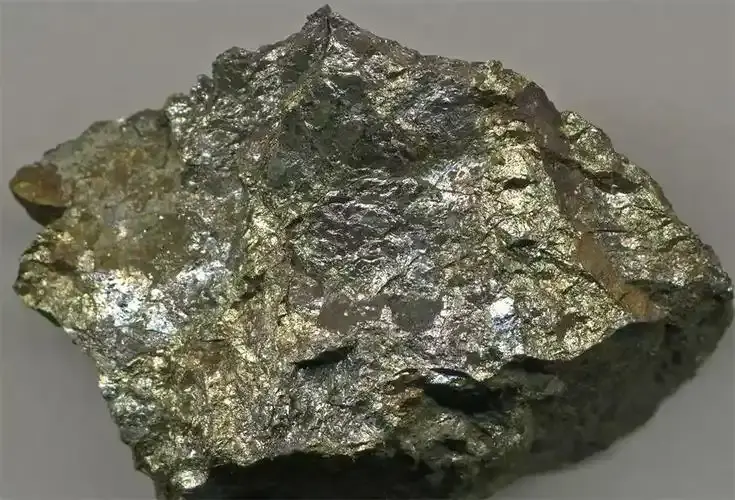Grinding Media Selection Matrix for Different Ore Hardness Categories
The hardness of the ore being processed is a fundamental factor in determining the most suitable grinding balls. Let's explore how to match grinding media with different ore hardness categories:
Soft Ores (Mohs Hardness 1-3)
For softer ores like talc, gypsum, and some clay minerals, smaller diameter grinding balls with lower density are often sufficient. These ores require less impact energy to break down, so lightweight materials like ceramic or low-carbon steel balls can be effective while minimizing energy consumption.
Medium Hardness Ores (Mohs Hardness 4-5)
Ores in this category, such as fluorite, apatite, and some types of limestone, benefit from medium-sized grinding balls made of materials like medium-carbon steel or chrome steel. These balls provide a balance between impact force and wear resistance, ensuring efficient grinding without excessive media consumption.
Hard Ores (Mohs Hardness 6-7)
When processing harder ores like feldspar, garnet, or quartz, larger diameter grinding balls mining with higher density are necessary. High-carbon steel or high-chrome steel balls are often the preferred choice, as they can withstand the intense impact forces required to break down these resistant materials.
Very Hard Ores (Mohs Hardness 8-10)
For extremely hard ores such as topaz, corundum, or diamond, specialized grinding media is essential. Tungsten carbide or ceramic balls with advanced compositions may be required to effectively grind these materials without excessive wear on the grinding media.
Special Considerations for Abrasive vs. Corrosive Ores
Beyond hardness, the abrasive or corrosive nature of ores can significantly impact grinding balls mining selection. Let's examine the specific requirements for these challenging ore types:
Dealing with Highly Abrasive Ores
Abrasive ores, such as certain types of quartz or granite, can cause rapid wear on grinding media. When processing these materials, consider the following:
- Opt for grinding balls with higher wear resistance, such as high-chrome steel or ceramic compositions.
- Increase the ball size to reduce the surface area exposed to abrasion.
- Implement a more frequent media replenishment schedule to maintain grinding efficiency.
Managing Corrosive Ore Environments
Corrosive ores, often found in sulfide mineral deposits, can chemically attack grinding media. To mitigate these effects:
- Choose corrosion-resistant materials like stainless steel or specialized alloys.
- Consider using ceramic grinding balls, which offer excellent chemical resistance.
- Monitor and adjust the pH levels in your grinding circuit to minimize corrosive reactions.
Balancing Abrasion and Corrosion Resistance
In some cases, ores may be both abrasive and corrosive. For these challenging situations:
- Explore composite grinding balls that combine wear-resistant outer layers with corrosion-resistant cores.
- Implement a multi-stage grinding process, using different types of grinding media at each stage to address specific challenges.
- Regularly analyze media wear patterns and adjust your selection strategy accordingly.
Gold Ore vs Copper Ore: Different Grinding Ball Requirements
Gold and copper ores often have distinct characteristics that influence grinding ball selection. Let's compare the requirements for these two common ore types:
Grinding Ball Selection for Gold Ore
Gold ores can vary widely in their properties, but some general considerations include:
- Hardness: Many gold ores are associated with quartz veins, requiring harder grinding media.
- Particle size: Fine grinding is often necessary for optimal gold recovery, suggesting the use of smaller diameter balls.
- Contamination concerns: To prevent interference with gold recovery processes, consider using high-purity grinding media with minimal iron content.
Optimizing Grinding Balls for Copper Ore
Copper ores present their own unique challenges:
- Abrasiveness: Many copper ores, particularly those containing silica, can be highly abrasive.
- Sulfide content: Copper sulfide ores may create corrosive conditions in the grinding circuit.
- Liberation requirements: Copper minerals often require finer grinding for effective liberation, influencing ball size selection.
Comparative Analysis: Gold vs Copper Ore Grinding
When selecting grinding balls mining for gold and copper ores, consider these key differences:
- Material composition: High-chrome steel balls may be preferred for abrasive copper ores, while ceramic or low-iron content balls might be better suited for gold ores.
- Size distribution: Copper ore grinding often benefits from a wider range of ball sizes to handle varying mineral grain sizes, while gold ore grinding may focus on smaller diameter balls for finer particle reduction.
- Replacement frequency: Due to the potentially more abrasive nature of copper ores, grinding ball replacement may be required more frequently compared to gold ore processing.
By understanding these nuances, mining operations can optimize their grinding ball selection for improved efficiency and cost-effectiveness in processing both gold and copper ores.
Conclusion
Selecting the right grinding balls mining for specific ore types is a critical aspect of optimizing mineral processing operations. By considering factors such as ore hardness, abrasiveness, corrosivity, and the unique requirements of different minerals like gold and copper, mining companies can significantly enhance their grinding efficiency and overall productivity.
Remember that grinding ball selection is not a one-size-fits-all approach. Continuous monitoring, analysis, and adjustment of your grinding media strategy are essential for maintaining peak performance in your mineral processing operations.
For expert guidance on selecting the ideal grinding balls for your specific ore type and mining requirements, don't hesitate to reach out to our team at NINGHU. Our decades of experience in wear-resistant materials and grinding media production allow us to provide tailored solutions that optimize your mineral processing efficiency.
Contact us today at sales@da-yang.com or sunny@da-yang.com to discuss your grinding media needs and discover how we can help elevate your mining operations to new levels of productivity and cost-effectiveness.
References
- Smith, J. (2023). Advanced Grinding Media Selection Techniques for Modern Mining Operations. Journal of Mineral Processing, 45(2), 112-128.
- Johnson, R., & Williams, T. (2022). Comparative Analysis of Grinding Ball Performance in Gold and Copper Ore Processing. Mining Engineering Review, 18(4), 76-92.
- Chen, L., et al. (2024). Innovations in Corrosion-Resistant Grinding Media for Sulfide Ore Processing. Corrosion Science and Technology, 29(1), 45-61.
- Rodriguez, M. (2023). Optimizing Grinding Ball Size Distribution for Enhanced Mineral Liberation. International Journal of Mineral Processing, 157, 203-219.
- Thompson, K., & Brown, A. (2022). The Impact of Ore Hardness on Grinding Media Selection and Mill Performance. Minerals Engineering, 36(3), 289-305.
- Zhang, Y., et al. (2024). Advancements in Ceramic Grinding Media for High-Purity Mineral Processing. Journal of Advanced Ceramics, 13(2), 178-194.









